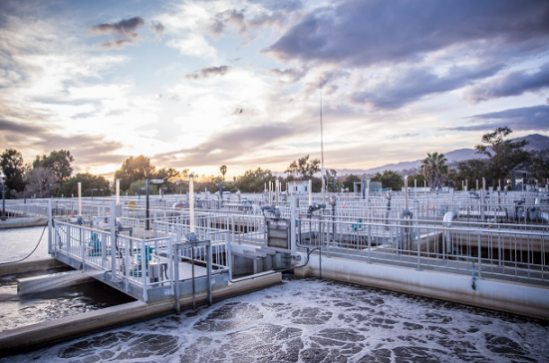
courtesy of the City of Santa Barbara
While often glanced over, sewage systems may have become the newest source of information on the spread of the novel coronavirus.
The Center for Disease Control (CDC) approved the newest method of Covid-19 contact tracing on Aug. 8. This new method, known as sewage surveillance, is currently used in a number of cities in the United States including Baton Rouge, Houston, and Los Angeles, and the list is growing daily as scientists use this method to gather live data to help stop further infections of the coronavirus.
Sewage surveillance tests the number of virus copies that are in a specific area and from there, scientists calculate how many people in that community are infected by Covid-19. Sewage surveillance involves many teams across the country composed of environmental biologists, veterinarians, and epidemiologists to get accurate and effective results.
“Most big cities are doing this now,” said LSU Civil and Environmental Engineering Professor John Pardue who spearheaded the use of wastewater to see how many cases of the virus exist. “It is a great tool for epidemiologists to use for all types of things including analyzing diet, blood pressure, and viruses in a community or individual.”
Pardue said sewage surveillance has already existed for decades prior. It helped scientists gather live data and find information about diseases like Polio and Ebola; but, the CDC just approved of its use in the effort to contact trace the coronavirus.
“I think that the CDC was not quite sure what it meant or how to interpret the data,” said Pardue on the CDC’s decision to only recently approve this form of contact tracing. “Sewage surveillance did not really take off until the coronavirus.”
Until now, the over-the-phone contact tracing method, which consists of a system of volunteer health professionals who contact individuals who have tested positive for the coronavirus and track down those the infected individual came into contact with, has remained the sole version of contract tracing in the fight against the spread of the coronavirus. This method provides information on exact individuals that may have caught the virus but not the extent of how large the number of infections within a community.
By contrast, contact tracing through sewage surveillance could help provide better estimates of the infected population of a specific community or communities in a timely manner.
“Over the phone contact tracing doesn’t give you a lot of information in the time you need it, and sewage surveillance is less accurate when it comes to identifying specific individuals,” said Pardue.
“The big thing that we have seen in the sewage system is a direct impact on public health. We saw a big surge of virus samples in the sewage about a week ahead of hospital data.”
The early indications in the sewage water of the number of cases in an area can impact the awareness of the people in a community and also impact the type of precautions each person takes in protecting against the virus.
“I can’t stress enough how important it is to keep the community educated and aware of the amount of Covid-19 in an area,” said Eligio Cisneros who works as a contact tracer in the city of Houston. “It gives us ease when we know exactly where and who it is coming from. In my opinion, sewage surveillance and contact tracing give about the same results just on a different timeline.”
The future of various methods of contact tracing will depend on the level of technological advancements, resources of the local public health agencies and counties, and most importantly the level of cooperation of citizens in a community.
“The effectiveness of contact tracing all depends on honesty. The truth is a lot of people aren’t going to be honest about where they have been, and I think scientists need to be vigilant in getting the answers,” said Stephanie Norris, a nurse at a retirement home in Ottawa, Illinois. “It is interesting to see how each nursing home takes different safety precautions.”
Other cities in the United States have also begun to test the newest method of contact tracing to assess its efficiency in monitoring the coronavirus.






